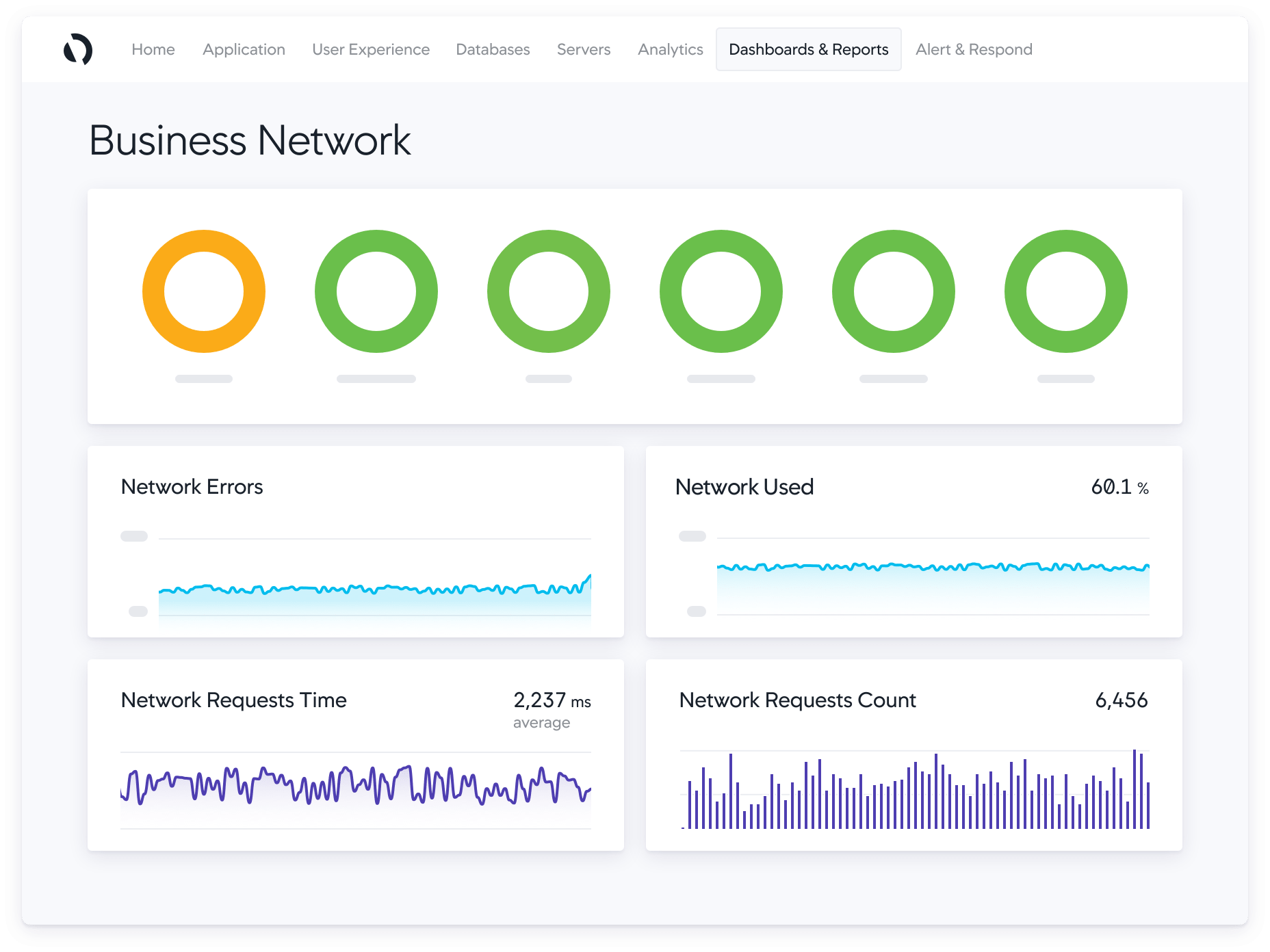In one of our previous articles, we have mentioned free tools to compare SQL Server database, in this article, I will be mentioning free and open-source APM (application performance monitoring) tools. But Before we proceed let's understand what is APM tool and how it can help you in your software development.
What are APM tools and How they can help in software development?
Well, if you are new to the software development world or have never used any APM (application performance monitoring) tools, then you must be thinking why do you need one?
To completely manage and monitor any application performance, we need lots of different types of data, so this is where APM tools help, it helps you collect data so you can improve the User Experience of your application, increased uptime with reduced risks to deliver more value to their users.
Application performance monitoring tools look at the application's hosting platform, mine information on process utilization, examine memory demands, bandwidth consumption and disk read/write speeds.
APM tools can be used by developers, the DevOps team, or a project manager.
APM tools can help you in tracking:
- Performance of individual web requests or transactions
- Data collection for client CPU utilization, memory demands, data throughput, and bandwidth consumption.
- To track error rates, or how often an application runs into a problem or fails.
- Gives you real-time notification of any failure (24/7 monitoring).
- In-depth application log data
- Custom applications metrics created by the dev team or business
- Measures the average response time for end-user interactions to see if speed is affecting web application performance.
Now we know, how useful it can be to have an APM tool for your application, let's take a look at open-source and paid APM tools that can be useful for your business.
Open Source APM Tools
1. Apache Skywalking (For Java, Golang, .Net Core, Python, PHP)

Application performance monitor tool for distributed systems, specially designed for microservices, cloud-native, and container-based (Docker, Kubernetes, Mesos) architectures
It is one of the most popular APM tools from GitHub which can be used with monitoring and diagnostic capabilities.
As with most of these tools, you get real-time monitoring agents, but you also get distributed tracing, service mesh telemetry analysis, metric aggregation, and visualization, all in one place.
Skywalking is specially designed for API, Cloud-Services, but it can not be a good choice for legacy systems.
Features:
- Consistent Observability - Tracing, Metrics, Logging, etc
- Supported by multiple languages - Java, Golang, .Net Core, Python, NodeJS, C++, PHP Lua
- Lightweight
- Customizable dashboard
- Alarm HTTP/gRPC forwarder
- Slack notification
- Trace and profile explorer
- IntelliJ IDE plugin, metrics side by side with codes
2. App-Metrics ( .NET Core and .NET framework.)
App Metrics is an open-source and cross-platform .NET library used to record metrics within an application. App Metrics can run on .NET Core or on the full .NET framework also supporting .NET 4.5.2.
Features:
- Capture application metrics within any type of .NET application e.g. Windows Service, MVC Site, Web API etc
- Automatically measure the performance and error of each endpoint in an MVC or Web API project
- When securing an API with OAuth2, automatically measure the request rate and error rate per client
- Choose where to persist captured metrics and the dashboard you wish to use to visualize these metrics
- Support Push and Pull based metrics collection via TSDB specific reporting extensions and exposing metrics in the required format over HTTP
- Support pushing metrics to a custom HTTP endpoint in the required format
- Support writing metrics to file in the required format for collection by a metrics agent
3. Scouter (Java)
Scouter is an open-source APM like new relic and appdynamics. Scouter provides extensions to additional open-source projects, including Telegraf and Zipkin
It provides Zipkin instrumentations (on C#, Go, Python, JavaScript, PHP, others) that are shown in an XLog (scatter) chart
It supports Redis, Nginx, Apache HTTPd, haproxy, Kafka, MySQL, MongoDB, RabbitMQ, ElasticSearch, and Kube.
4. inspectIT Ocelot (Java)
inspectIT Ocelot is a zero-configuration Java agent for dynamically collecting application performance, tracing and behavior data based on the OpenCensus library.
Despite the zero-configuration capability, it provides a powerful configuration feature that enables full and in-depth customization of all features.
The following system and JVM metrics are captured by default:
- CPU (usage and number of cores)
- Disk Space (used, free and total)
- Memory (used and available for various regions like heap or non-heap)
- Threads (counts and states)
- Garbage Collection (pause times and collection statistics)
- Class Loading (loaded and unloaded counts)
- Response times for sent and received HTTP requests are collected
5. CodeSpeed (Python)
Codespeed is a web application to monitor and analyze the performance of your code, known to be used by CPython, PyPy, Twisted and others.
It performs an in-depth performance analysis of the code.
6. StageMonitor (Java)
Stagemonitor with 1.6k Github Stars can be used for application performance monitoring for java server applications.
Features:
- Stagemonitor is successfully used in production as well as development, providing valuable insights constantly whilst imposing very low overhead
- Real-time Monitoring
- Shows call tree of the current request including SQL statements to identify the bottlenecks of a request.
- Provides in-browser widget
- Monitor and gather cluster metrics
7. SigNoz (Java, Python, NodeJS, Go)
Using Signoz, you can monitor your applications and troubleshoot problems in your deployed applications, an open-source alternative to DataDog, New Relic, etc.
Features:
- Monitor infrastructure metrics such as CPU utilization or memory usage
- Monitor application metrics such as latency, requests per second, error rates
- Track user requests across services
- Set alerts on metrics
- See detailed flame graphs of individual request traces
- Find the root cause of the problem by going to the exact traces which are causing the problem
- Supports langauges like Java, Python, NodeJS, GO.
Paid APM Tools
We have mentioned open-source tools in the above list, but there are some paid tools also which can be useful for you.
1. New Relic (.NET, Node, Python,C, Java, Ruby)
New Relic is one of the best APM tools with great features.
Features:
- Response Time, Throughput, and Error Rates.
- Identify hot spots in your app with New Relic's low-impact production thread profiler.
- Transaction Metrics and Traces: Visualizing where your app is spending its time is a game-changer.
- View and filter Go runtime data for troubleshooting performance in Go applications.
- Application Histograms & Percentiles.
- Measure performance of External Services.
- Access to Performance Data API.
- Distributed tracing lets you trace the path of a single request in a complex system.
- With JVM Performance Analyzer, it shows more data than ever that's relevant to anyone running on the JVM, regardless of what programming language or framework they use.
- Database monitoring provides a detailed overview of your database performance.
- Slow SQL Report.
- Track the exact SQL statements that are slowing down your site.
- Availability & Error Monitoring.
- Create and receive customized reports
2. Dynatrace (.NET, .NET Core, Java, C, C++, PHP,Python)
Dynatrace APM delivers by identifying the root cause of problems, saving you from manual data analysis. Fixing, accelerating, and optimizing your applications has never been so easy.
Features:
- Get insights into any application and environment
- Optimize performance and quickly resolve problems
- Trace requests through the entire call tree
- Improve transaction speeds and load times
- Optimize customer journeys based on visual insights
- Artificial intelligence helps to locate performance issues in real-time.
- APM monitoring takes over control of network traffic on host and process level.
3. Raygun (.NET, .NET Core, and Ruby on Rails with Node.js support coming soon)
Actionable, real-time insights into the quality and performance of your web and mobile apps
- Error and Crash Reporting
- Real User Monitoring
- APM software work together to provide real-time data about the user experience and performance, which you can easily leverage to identify bottlenecks
- Deployments Tracking
4. App Dynamics

App Dynamics is backed by Cisco and can be used by a large number of programming languages, including Java, .NET, PHP, Node.js, C++, Python, and Go.
AppDynamics gives you full-stack observability through the lens of your business, providing real-time insights that drive revenue and results.
Features:
- Observe cloud application performance in real-time.
- Deliver a flawless user experience that leverages highly scalable serverless application functions. Gain full visibility from the end-user to back- end application performance using a single unified observability platform.
- Baseline and measure business transaction health across relevant microservices and containers (e.g., AWS, Docker, and Kubernetes) for greater operational and organizational efficiency.
That's it, these were some of the best Open-Source APM and Paid APM tools.
You may also like to read:
